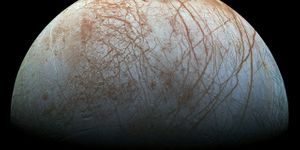SpaceX Launches Taiwanese Satellite: Formosat-5
Although SpaceX is a United States-based commercial space company, they still frequently perform space launches for other countries. This Thursday was no different, as SpaceX moved forward with a launch contract they signed with the Taiwanese government back in 2010.
To do so, SpaceX launched a tiny satellite known as the Formosat-5 from Vandenberg Airforce Base, California at approximately 2:51 P.M. Eastern time. The satellite went into orbit to replace the Fermosat-2 satellite that Taiwan retired nearly a year ago.
Image Credit: NSPO
Fermosat-5 weighed just over 1,000 pounds, which is incredibly light for a satellite. Moreover, it was the only thing SpaceX packed inside the Falcon 9 rocket’s cargo capsule for Thursday's launch.
Related: SpaceX wants to send Falcon 9 rockets to space every couple of weeks
Unfortunately, SpaceX didn’t have any other cargo they could pack along with the lightweight Fermosat-5 satellite. Instead, it went into space all by its lonesome, costing SpaceX quite a bit of money in the process; nevertheless, a contract is a contract.
The Falcon 9 rocket took off effortlessly from the launch pad with the ultralight payload onboard. Falcon 9 rockets are built to carry significantly heavier cargo, so the result was expected.
A video of the successful rocket launch is available on the SpaceX YouTube channel for your viewing pleasure:
After the Falcon 9 rocket made it to space, approximately 450 miles above the Earth's surface, the first stage returned to the Earth for a controlled landing. It successfully propped itself upright on a drone ship in the Pacific Ocean, just off the coast of California.
Notably, this marked SpaceX’s 15th successful Falcon 9 first stage landing.
Related: Read about last year's SpaceX Falcon 9 explosion in Cape Canaveral, Florida
Fermosat-5 is the first indigenously-built satellite by Taiwan’s National Space Organization (NSPO). Just like its predecessor, it's simply a remote sensing satellite that uses its onboard imaging equipment and science equipment to study the Earth.
SpaceX will undoubtedly refurbish the Falcon 9 it sent up into space for this launch, as the rocket hardly exhibited any wear and tear as a result of the ultra-light payload.
Source: Spaceflight Now









